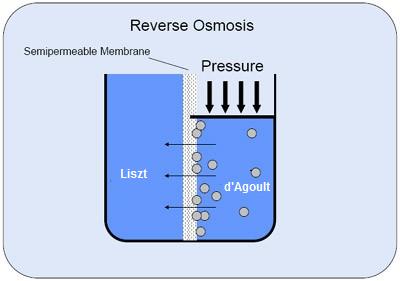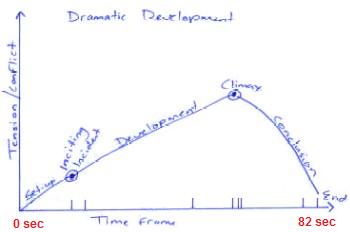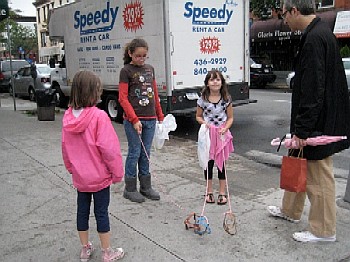
W e have thought about incorporating and/or becoming a not-for-profit but just haven’t made the time to speak with someone about the technicalities of it all, while adding up the pros and cons... If we had our way, practicing, playing, teaching, and performing would be all that filled our days! Each of us in the quartet feels anxious about how we can make a ‘go’ of it, financially. This adds to the stress in our lives. And stress no doubt affects the practicing, playing, teaching, and performing. So I’m not really sure why we haven’t yet made the time to speak to someone about creating a nonprofit org to help the quartet’s finances...”T he weeks my wife and I spent in England last November revealed to us just how prevalent forming non-profit ‘friends’ or ‘affinity’ organizations has become, for soloists and small chamber ensembles and composers, in the wake of recent years’ public-sector budget cuts and lower concert ticket sales during the recession. Standing chamber orchestras and choirs and annual music festivals and presenters and the like have typically had non-profit friends orgs for fund-raising and financial support, but what we saw in England, in concert after concert, was that individual artists and trios and quartets, etc., now had formed them as well.
— Anonymous, first violin, leading string quartet, via email.
I n the U.S., finances for people in the arts are at least as tenuous as elsewhere, but there has not yet, so far as I can tell, been such a move en masse to incorporate as a nonprofit organization and to use this org as a vehicle for increasing and stabilizing a group’s finances as is being so frequently done by chamber performers and composers in the U.K.
B ut the trend in the U.S. has begun. The variety of purposes and budgets is quite large. For example, composer friend of mine has recently used her 501(c)(3) to successfully raise the funds necessary for having a new work performed and recorded in Europe. A quartet I know has recently had their 501(c)(3) run a campaign to raise the money needed to cover expenses for an Asian performance tour. Campaigns like these entail extra effort for the artists above and beyond their existing commitments—‘Friends Association’ gatherings, green-room and aprés-performance meet-and-greet activities, and so on. But the process can be far more successful financially—and far faster—than trying to raise money through grant applications, residencies, adding yet more performances to already-packed schedules, and so on.
T his CMT blog post gathers together some resources/links that may be of interest to you if you are considering incorporating as a nonprofit 501(c)(3) org. Here is a list of the basic steps:
- Determine what type of nonprofit organization you are. Some links below provide information needed to establish a new non-profit.
- Write your mission statement. The mission statement is a concise expression that covers in one or two sentences who the organization is, what it does, your purpose, services and values.
- Form your Board of Directors. Each state has regulations that set the minimum size of a Board (typically, three) but the best number of people for you should be determined by the needs of your organization. Based on what your organization would like to accomplish, you should decide what skills you need the people on your Board to have. You want qualified individuals who are passionate about your mission, who are willing to give of their talents and time and money, and who will be able to effectively attract other people to do the same.
- File your Articles of Incorporation. These are written statements of creation of an organization files with the appropriate state agency. They protect both you and your Board members from legal liabilities that may be incurred by your organization, making your corporation the holder of debts and liabilities, not yourself or other individuals and officers who work for your organization. In the U.S., the specific requirements governing how to incorporate are determined by each state. You can obtain the information you need to proceed with this step from your state Attorney General’s office or your Secretary of State’s office. I highly recommend consulting with an attorney who is experienced in the area of nonprofit law so that you do not make one of the many mistakes that people make when they try to incorporate by themselves. In most cases, this should cost less than $1,000 to do, money well-spent.
- Draft your Bylaws. Bylaws are the written rules that say how the organization operates. Although bylaws are not required to file for 501(c)(3) status, they will help you in governing your nonprofit org. Bylaws should be drafted with the help of an attorney and approved by your Board early in your organization’s development.
- Prepare a written budget document for your non-profit org for the current year, in an Excel or OpenOffice or GoogleDocs spreadsheet. A budget is the dollars in anticipated income and expenses, for your operating plan--the cashflows to achieve the objectives of your organization. Your new org may create a budget by projecting potential income and expenses: figure out how much money you have to raise and spend to accomplish what you intend to do during the current year.
- Establish a record-keeping system for your non-profit org, separate from the record-keeping for your group or for each of you as individuals. Legally, you must save all Board documents including your meetings’ minutes, your financial statements, Bylaws, Articles of Incorporation, financial reports, and other records. You should contact your appropriate state agency for more information on what records you are required to keep in your files and for how many years you are required to retain them.
- Establish an accounting system for your nonprofit group. QuickBooks®, Quicken®, or other software can help.
- Apply for your federal Employer Identification Number. Regardless of whether or not you have employees, nonprofits are required to obtain a federal Employer Identification Number (EIN), also referred to as the federal ID number. Available from the IRS, this number is used to identify the organization when tax documents are filed. You use Form SS-4 when applying for your EIN.
- File for 501(c)(3) status for your org. To apply for recognition of tax-exempt, public charity status, obtain Form 1023 and Publication 557 (links below) from the local IRS. The filing fee depends upon the size of the organization’s budget. I strongly recommend getting the assistance of a certified public accountant (CPA) to help you prepare your Form 1023 filing.
- File for state and local tax-exempt status for your org. Contact your state Department of Revenue, your county or municipal Department of Revenue, local Departments of Revenue, and county or municipal clerk’s offices for information on how to do this in your jurisdictions. Your lawyer or your CPA can help you with this.
- Fulfill the applicable ‘charitable solicitation law’ requirements. Your organization’s plans include fundraising, so be aware that many states and a few counties and cities regulate organizations that solicit funds within their borders. Usually compliance involves getting a permit or license and then filing an annual report and financial statement. Contact your state Attorney General’s office, your state Department of Commerce, your state and local Departments of Revenue and your county or municipal clerk’s offices to get more information. Save copies of the letters you sent to these offices in your org’s files, plus copies of whatever correspondence you receive back from those offices.
- Apply for a nonprofit mailing permit. Second- and third-class rates are substantially less when nonprofits mail to a large number of addresses. For more information on eligibility, download a copy of U.S. Postal Service Publication 417, ‘Nonprofit Standard Mail Eligibility’ (link below). In order to qualify for nonprofit rates, your mailings must be soliciting monetary donations and not promoting or otherwise facilitating the sale of any goods (e.g., CDs) or services.
- UnitedStatesArtists.org
- U.S. IRS 510(c)(3) page
- IRS Pub 4220 'Applying for 501(c)(3) Tax-exempt Status'
- IRS Pub 557 'Tax Exempt Status for Your Organization'
- IRS Form 1023
- IRS Form 1023 instructions
- IRS Form SS-4
- IRS Form SS-4 instructions
- U.S. Postal Service Pub 417
- USPS nonprofit mail eligibility and prices
- Nolo.com summary on forming a 501(c)(3) nonprofit
- Andrew Taylor blog 'Artful Manager' at ArtsJournal.com
- CharityNetUSA.com (E. Rodriguez & Associates, 2151 Consulate Dr., Orlando FL 32837)
- NonprofitLegalCenter.com (T.S. Wrobel & Associates LLP, 870 Market St., San Francisco CA 94102)
- Intuit QuickBooks Nonprofit 2011 software.
- Blackbaud Arts & Cultural / eTapestry / Raisers Edge
- Ahern T. Seeing Through a Donor's Eyes. Emerson & Church, 2009.
- Bell J, Masaoka J, Zimmerman S. Nonprofit Sustainability: Making Strategic Decisions for Financial Viability. Jossey-Bass, 2010.
- Bray I. Effective Fundraising for Nonprofits: Real-World Strategies That Work. 3e. Nolo, 2003.
- Farris S. Nonprofit Bookkeeping & Accounting for Dummies. ForDummies, 2009.
- Fredricks L. The Ask: How to Ask for Support for Your Nonprofit Cause, Creative Project, or Business Venture. Jossey-Bass, 2010.
- Friedman C, Hopkins K. Successful Fundraising for Arts and Cultural Organizations. 2e. Greenwood, 1996.
- Grobman G. The Nonprofit Handbook: Everything You Need to Know to Start and Run Your Nonprofit Organization. 5e. WhiteHat, 2008.
- Horan J. The One Page Business Plan for Non-Profit Organizations. OnePage, 2007.
- Hutton S, Phillips F. Nonprofit Kit for Dummies (with CD-ROM). ForDummies, 2001.
- Ivins K. Running QuickBooks in Nonprofits. CPA-911, 2005.
- Kaiser M. The Art of the Turnaround: Creating and Maintaining Healthy Arts Organizations. Brandeis Univ, 2008.
- Levy R. Yours for the Asking: An Indispensable Guide to Fundraising and Management. Wiley, 2009.
- Mancuso A. How to Form a Nonprofit Corporation. 9e. Nolo, 2009.
- McKinnon H. The 11 Questions Every Donor Asks and the Answers All Donors Crave: How You Can Inspire Someone to Give Generously. Emerson & Church, 2008.
- Wolf T. Managing a Nonprofit Organization in the Twenty-First Century. Simon & Schuster, 1999.











